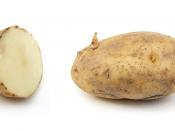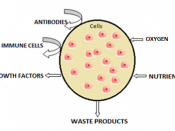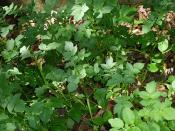Experiment to Investigate Osmosis in Potatoes
The aim of this experiment is to investigate the movement of water in and out of plant cells. The cells chosen for study will be taken from potato tubers. Firstly I will explain what osmosis is. Osmosis is the passage of water from a region of high water concentration through a semi permeable membrane to a region of low water concentration. This definition contains three important statements:
a) It is the passage of water through a semi permeable membrane
b) It is the passage of water from a region of high water concentration
c) It is the passage of water to a region of low water concentration.
All the above statements are included in the definition, but define certain aspects of it.
Semi-permeable membranes are very thin layers of material which allow some things to pass through, but prevent others. A cell membrane is semi permeable.
They allow small molecules like oxygen, water, amino acids etc. to pass through but will not allow larger molecules like sucrose, starch, protein etc. through. A region of high concentration of water is either a very dilute solution of something like sucrose or pure water. In each case there is a lot of water: a high concentration of water. A region of low water concentration is the opposite of the above, i.e. a very high concentration of sucrose solution: a low water concentration.
The water content of plants varies depending on environmental conditions. In Land plants this water plays a vital role in the support of tissues and the transport of materials around the organism. Lack of water leads to wilting and eventually death. Water is mainly absorbed through the roots, which are covered in specially adapted root hair cells, with large surface areas and thin cell walls...



Very Good
It was a Very good and professional essay. I learned many things from it. Thank you
0 out of 1 people found this comment useful.